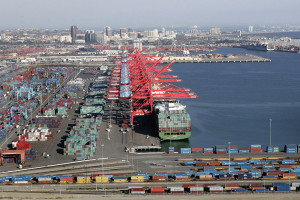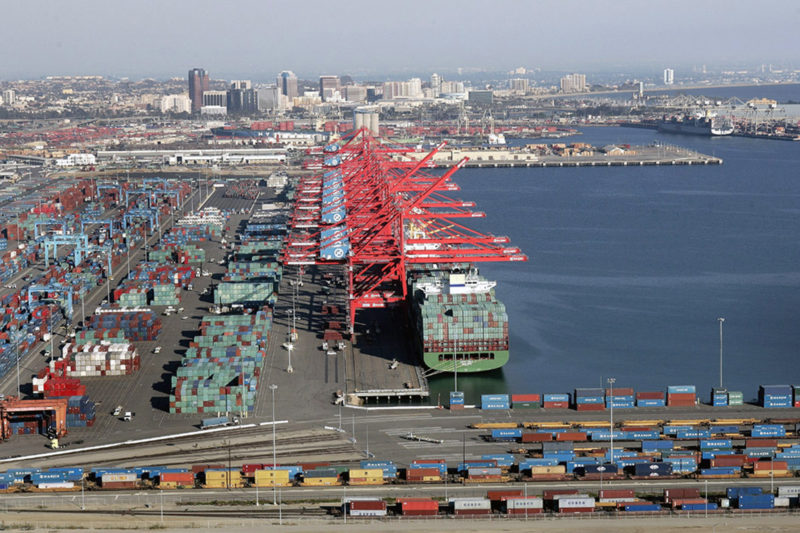 Now that the labor dispute at the U.S. West Coast (USWC) ports has been resolved, the question foremost in industry analysts’ minds today is how much of the cargo diverted to the U.S. East Coast (USEC) will return.
Now that the labor dispute at the U.S. West Coast (USWC) ports has been resolved, the question foremost in industry analysts’ minds today is how much of the cargo diverted to the U.S. East Coast (USEC) will return.
This as the Port of Oakland in its latest status report said there were already visible signs of gains on the backlog that had ensued from the contract deadlock.
Drewry in its latest analysis said it expects most of the diverted cargo to return to the USWC with the resolution of the labor impasse, but added it is not certain how much of the volume will actually go back.
The USEC rates, for one, are much higher than in the USWC.
“How much, it’s difficult to say, but if the USEC rate differential is reduced significantly some shippers might prefer to maintain that routing option, especially as more slots become available through greater use of the Suez Canal routing and the wider Panama Canal,” said Drewry.
Moreover, the USEC labor contract is due to expire in September 2018, and if the negotiations turn contentious as what had happened at USWC, it “would inevitably swing things back in the USWC favor temporarily,” it added.
After 10 months of negotiations and work slowdowns that have caused ships to wait for days outside of U.S. West Coast ports, the International Longshore and Warehouse Union and Pacific Maritime Association have finally agreed on a new five-year labor contract.
The brokerage of the new contract was announced February 20 by U.S. Labor Secretary Thomas Perez, who admitted that he did not know how long it will take to clear the backlog.
According to the Marine Exchange of Southern California, as of February 27, there were 23 container ships waiting outside the ports of Los Angeles and Long Beach.
The beneficiaries of the USWC disruption have been ports on the US East Coast which have been posting record monthly throughput statistics. This is also reflected in Drewry’s Container Freight Rate Insight, which reports that spot rates from Asia to the USEC are now typically 2.1 higher than to the USWC, up from an average of 1.6 through 2013 and the first five months of 2014.
While the agreement is welcome news, Drewry said clearing the backlog is likely to take months. There is also the concern that U.S. ports should not merely return to “normal” but should address their lagging productivity that has been noticeable even before the recent turmoil.
“It remains to be seen how much cargo the USEC ports will retain when the USWC ports are fully operational again. The cargo shift to the USEC is not a new phenomenon as imports from Asia have significantly outpaced growth to the USWC since the start of the century. This has contributed to the USEC rate inflation, but the USWC issues have widened the pricing differential even more,” continued the maritime research service.
It said the USWC ports face real challenges going forward, both in regaining confidence and in relative price competitiveness of alternative routes. The saving grace for the Californian ports in particular though is the huge local demand generated by the population and economic activity. This, said Drewry, will always pull in shipping services serving local cargo needs, and longer distance intermodal traffic can be handled on the same vessel calls.
“Most of the diverted cargo will return but for USWC ports to reverse the long-term trend towards the USEC they will need to restore confidence and increase productivity,” said Drewry.
Oakland observes backlog reduction
In related news, the Port of Oakland reported gains on its cargo backlog in its latest update released March 6.
The port said gains in container movement were visible from ship to shore, including declining vessel backup, decongested terminals, improved transaction times, and better terminal productivity.
The port added that it expects the cargo backup to clear within two months.
“This isn’t victory—there’s still a great deal of work to do,” said Oakland Maritime Director John Driscoll. “But we’re seeing good collaboration between labor, terminal operators and harbor truckers and our customers will soon benefit from faster, smoother cargo flow.”
Port officials said marine terminals have cleared out the import buildup in their container yards. Delays are now mostly limited to containers still stowed on ships awaiting berths. The port cautioned that temporary yard delays may recur as workers accelerate operations to eliminate the vessel backup.
The port said terminals are working nights and weekends to improve cargo flow.





